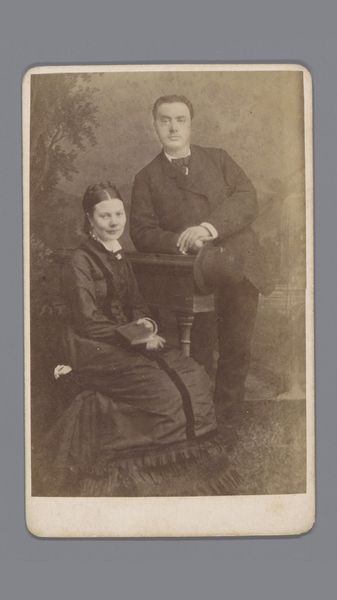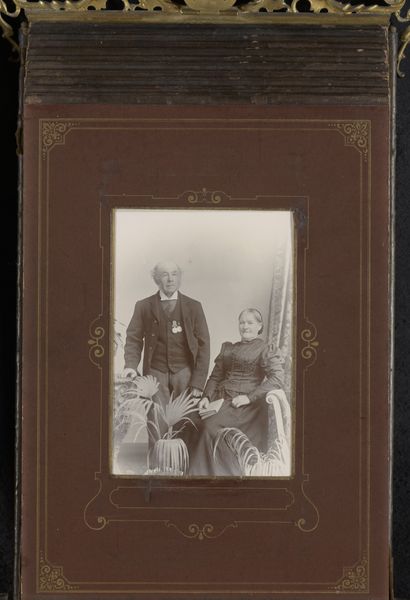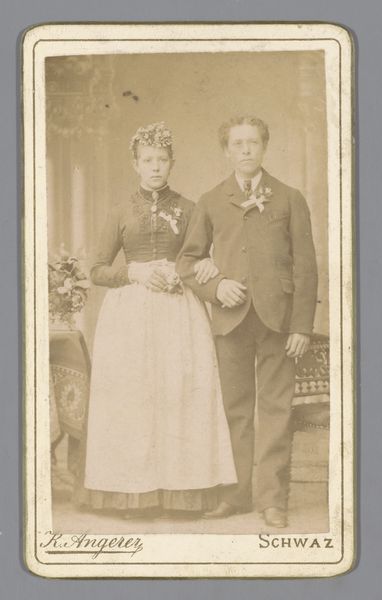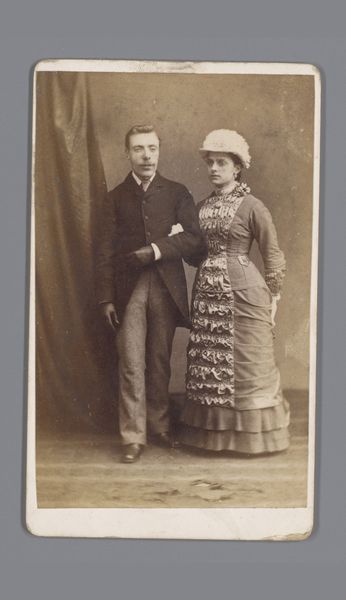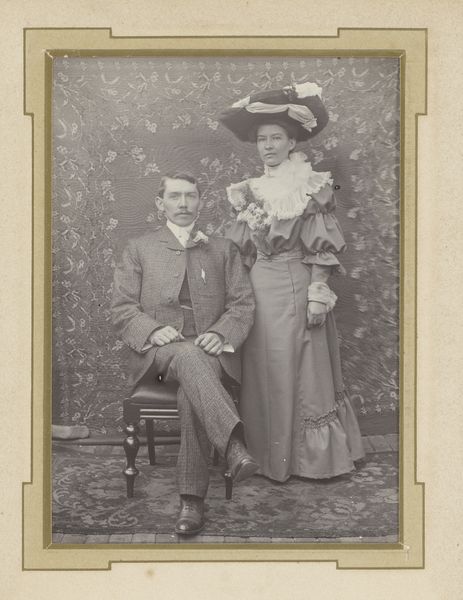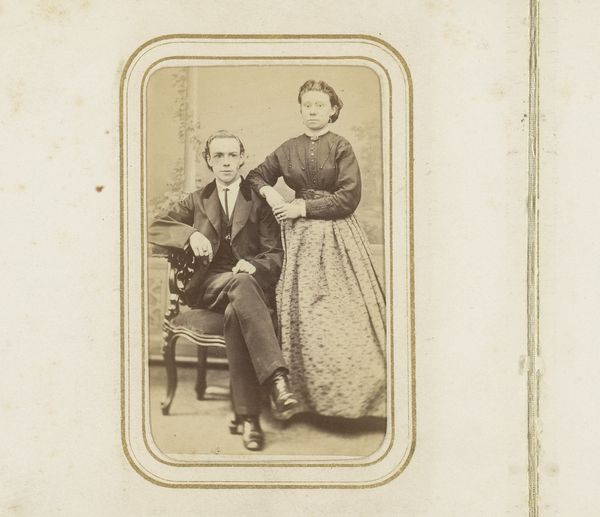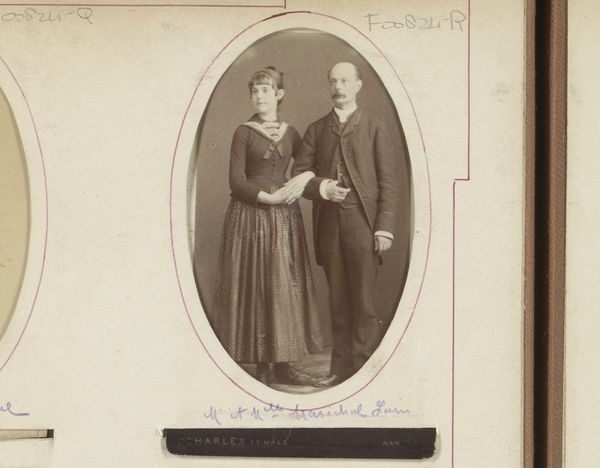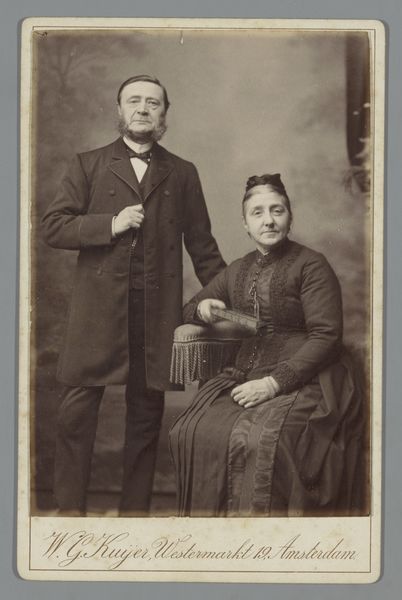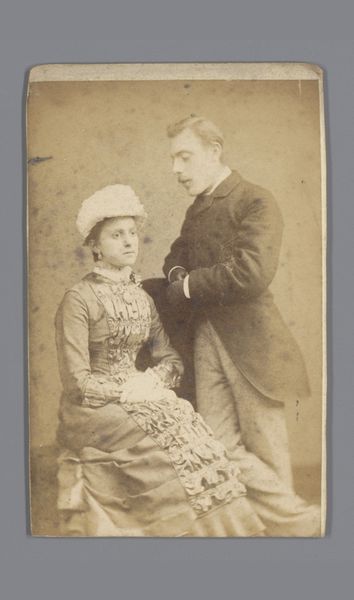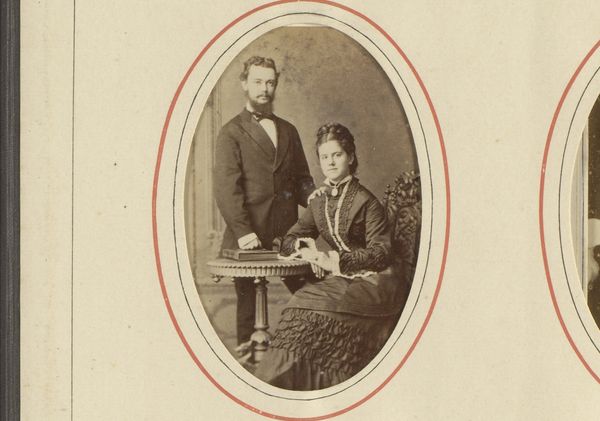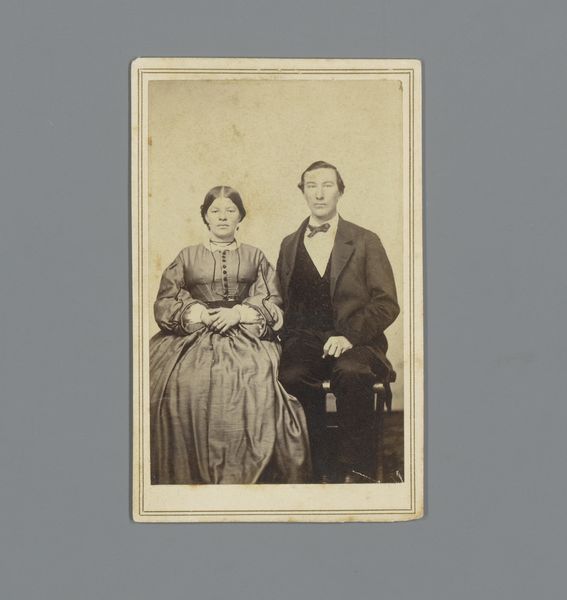
photography, gelatin-silver-print
#
portrait
#
still-life-photography
#
photo restoration
#
photography
#
historical fashion
#
gelatin-silver-print
#
paper medium
Dimensions: height 127 mm, width 92 mm
Copyright: Rijks Museum: Open Domain
Curator: This is a studio portrait of an unknown couple, a gelatin-silver print, taken sometime between 1885 and 1905 by Portland Studios. What’s your first impression? Editor: Stern. Very formal, and quite still. It gives me the impression of labor and perhaps lower class, as if a professional portrait was a significant, rare occasion. I’m struck by the material elements in their clothing. Curator: It's interesting you point that out. These portraits became increasingly popular during that time as photography became more accessible to the middle class. Owning a portrait became a symbol of social standing. Portland Studios, with its several locations in North London as printed in the mount of this photo, would have aimed to serve that demographic. Editor: True. And thinking about it, consider the labor involved. Preparing clothes, going to the studio… gelatin-silver printing itself was a pretty industrialized process by the late 19th century, think of all the people working behind the scenes in this type of photography studio: printers, darkroom staff, assistants. Curator: Yes, the photographic print also went through industrial processing! And their clothing reflects their social position, though difficult to assert precisely without any additional historical information about the subjects. Notice, however, the contrast between the man's tailored suit and the woman's high-necked, dark, patterned blouse. The plant on the side helps to stage the space and makes the sitters comfortable, contributing to a homely, intimate sensibility in a formal, commercial setting. Editor: That pot doesn't look like much. And do we think that’s really their houseplant or another generic addition for aspirational effect? I am also seeing this as an item for display, for familial preservation. Do we know how the prints were delivered, presented and collected? Curator: Researching into these prints often entails looking into studio ledgers when those are available. Often the photograph was mounted on card stock. These were sturdy objects, to be displayed on mantels, for example. Editor: Ultimately, we're considering an artifact of class aspiration made available through manufacturing and studio work. This is where art meets labor, quite literally. Curator: Exactly, and placing this studio portrait within its broader social and commercial context illuminates how photography democratized portraiture. It’s a powerful testament to their place in history, despite their names being lost to us.
Comments
No comments
Be the first to comment and join the conversation on the ultimate creative platform.
